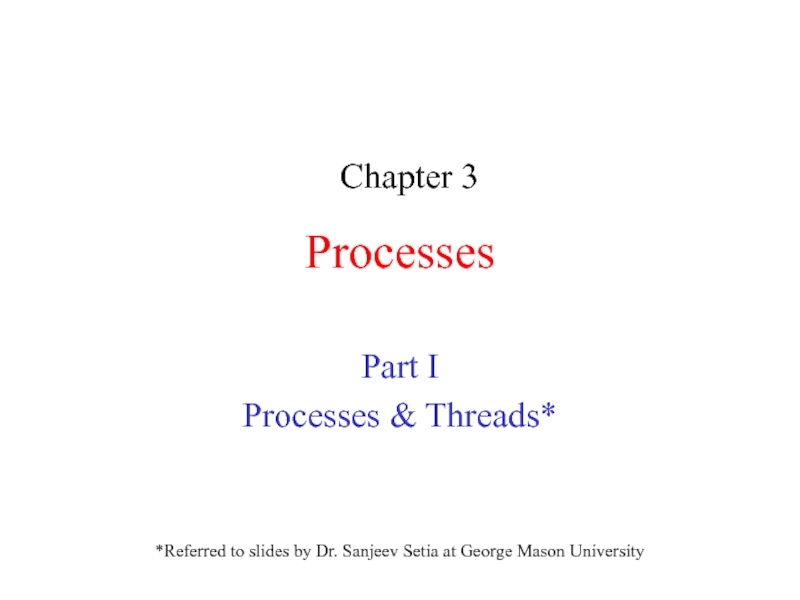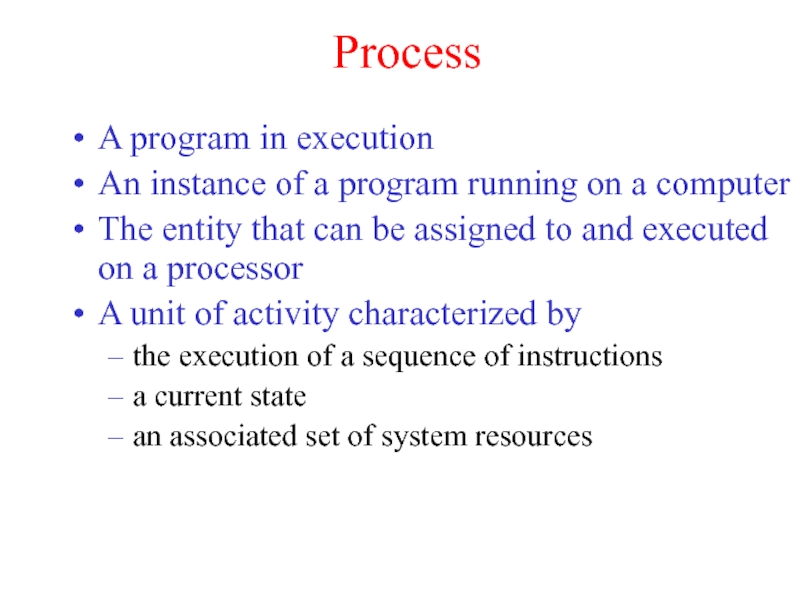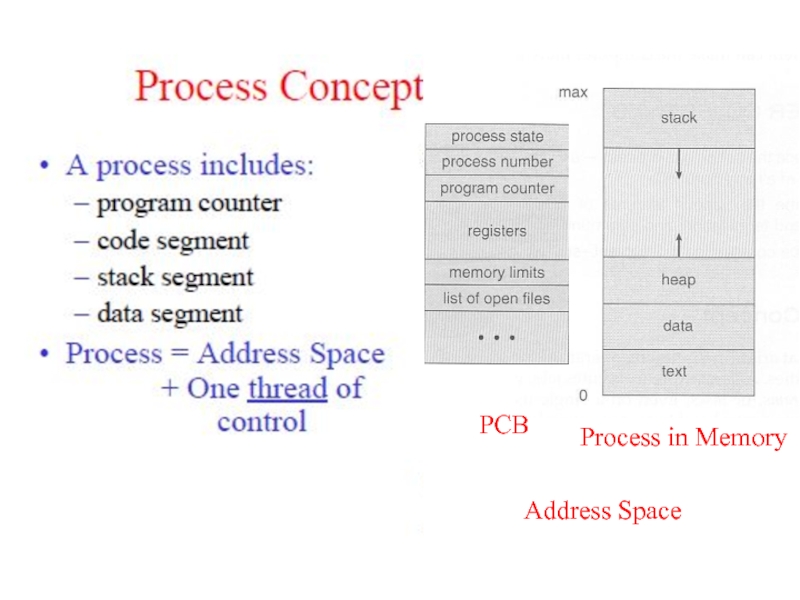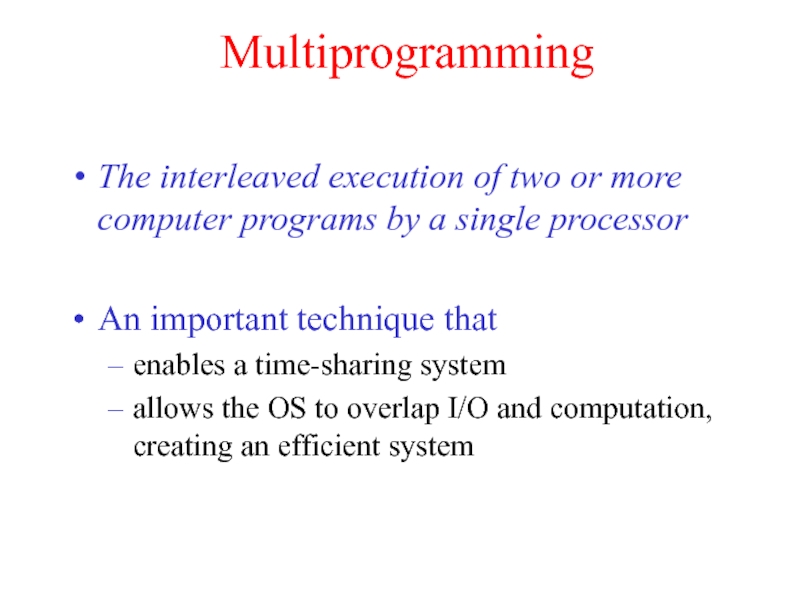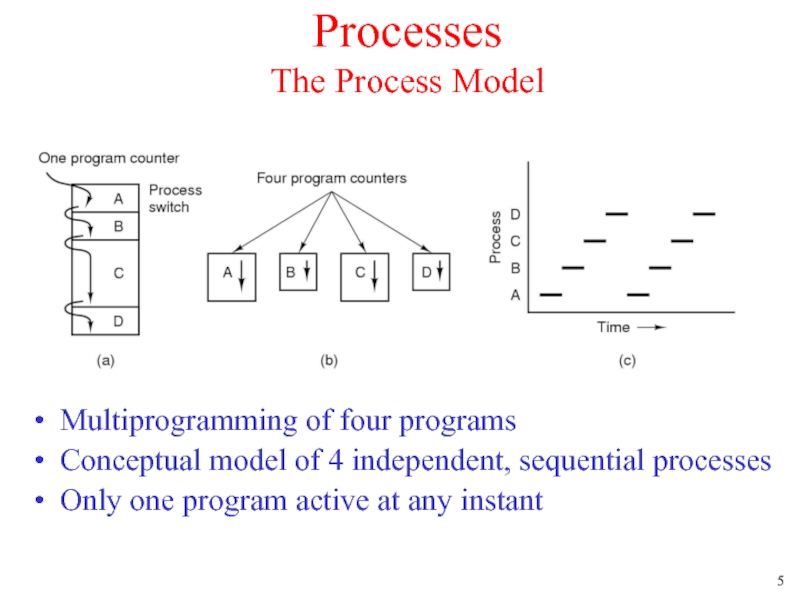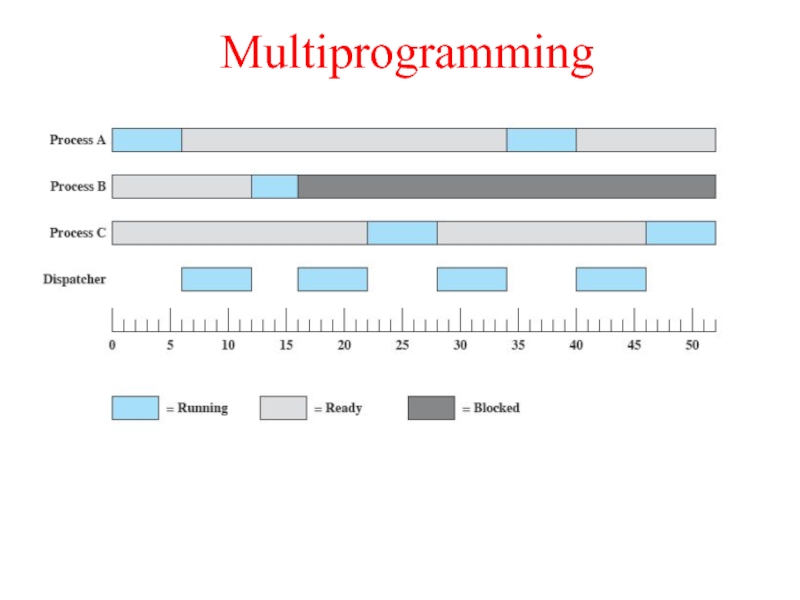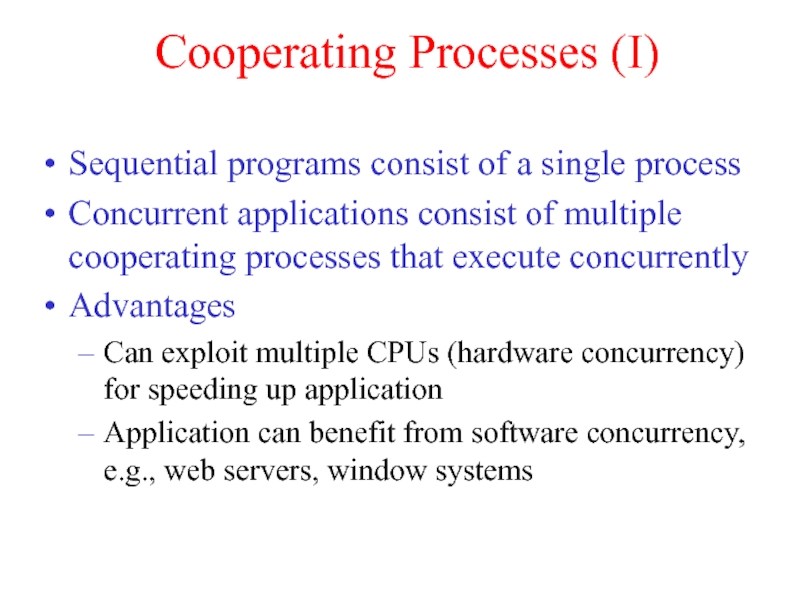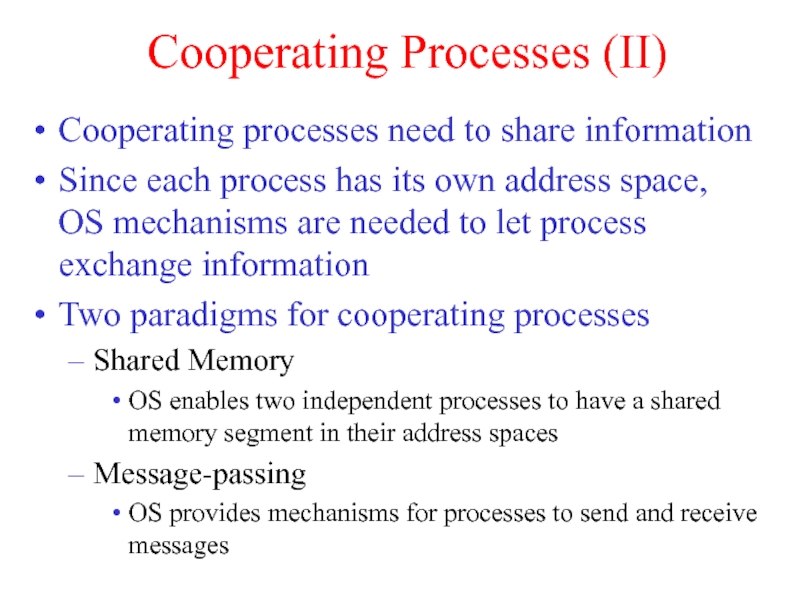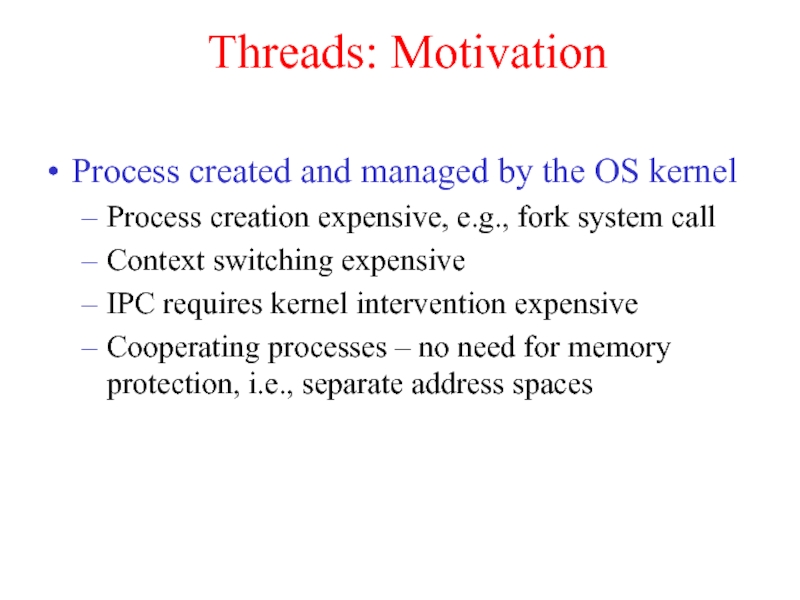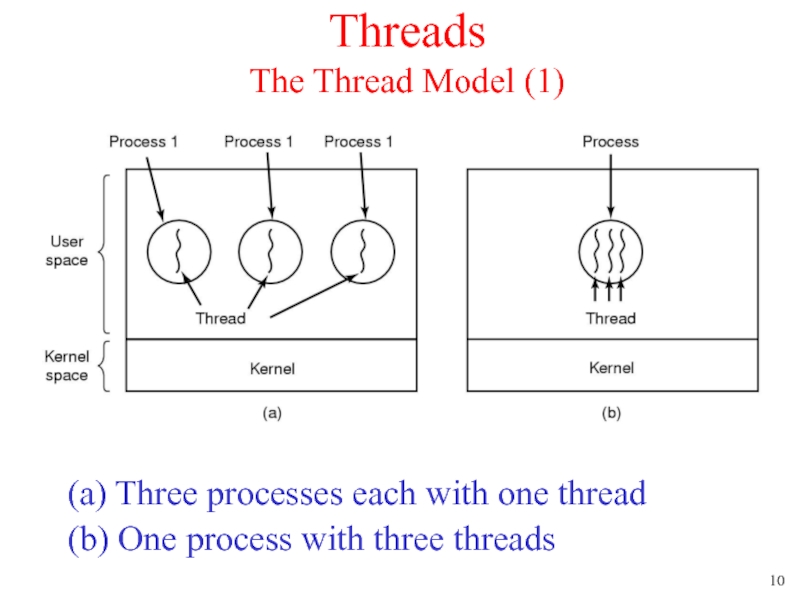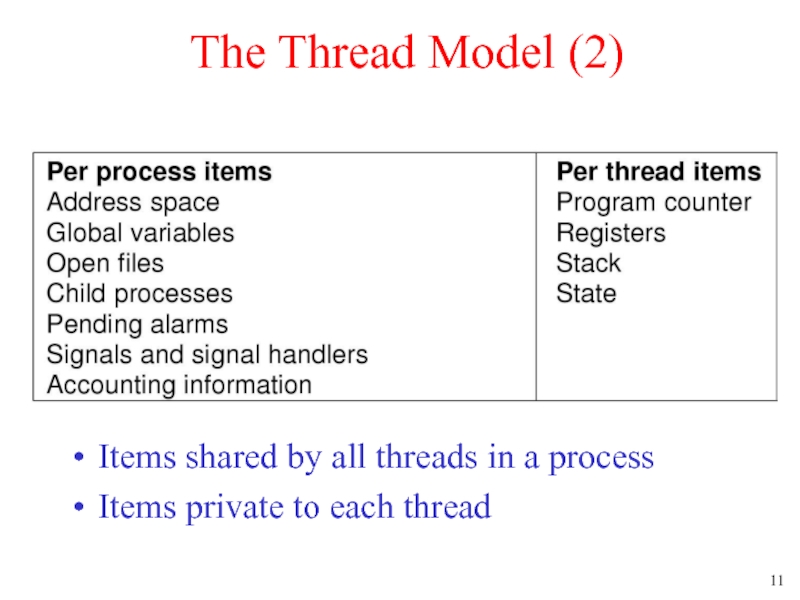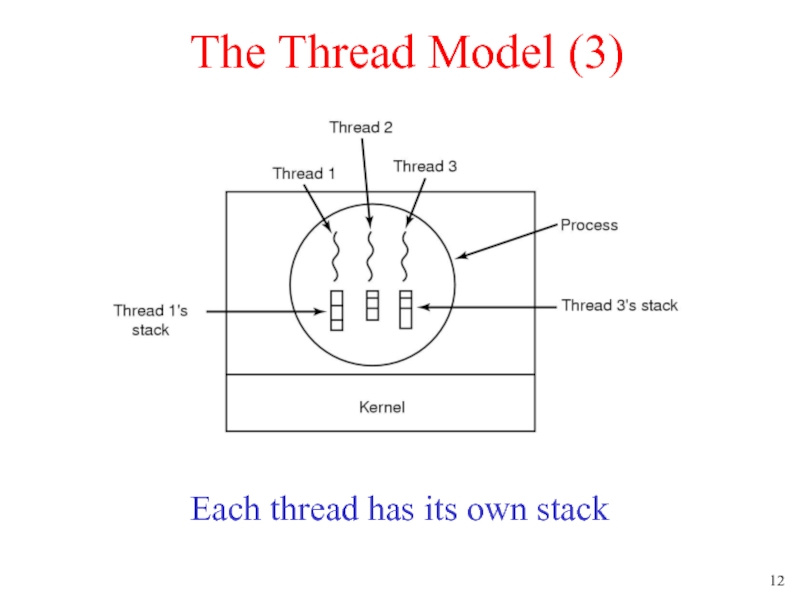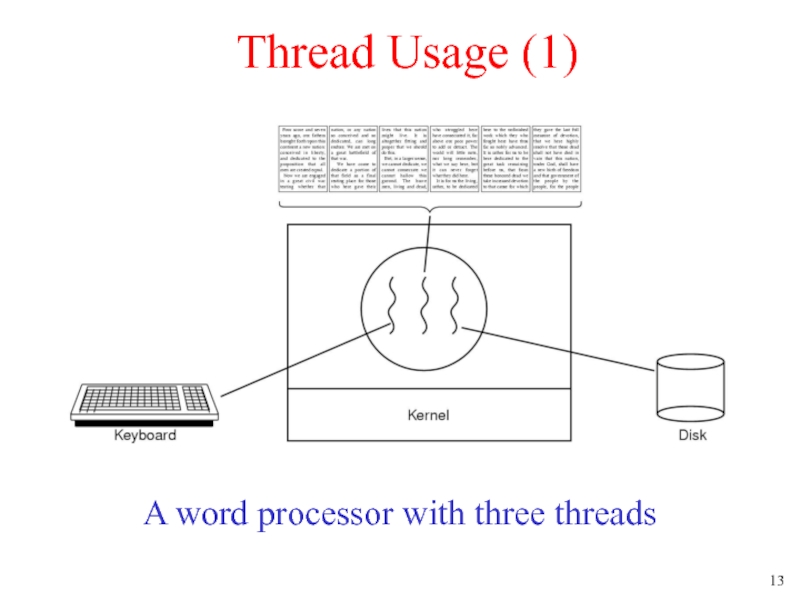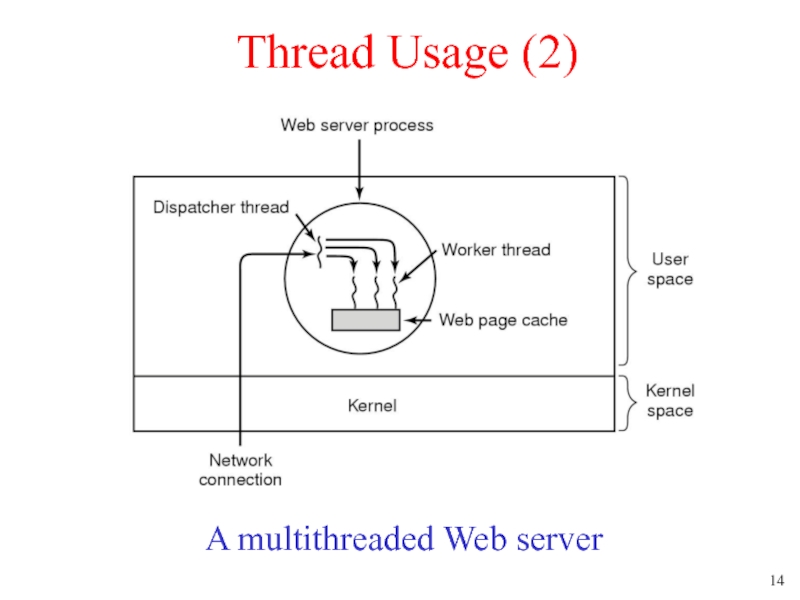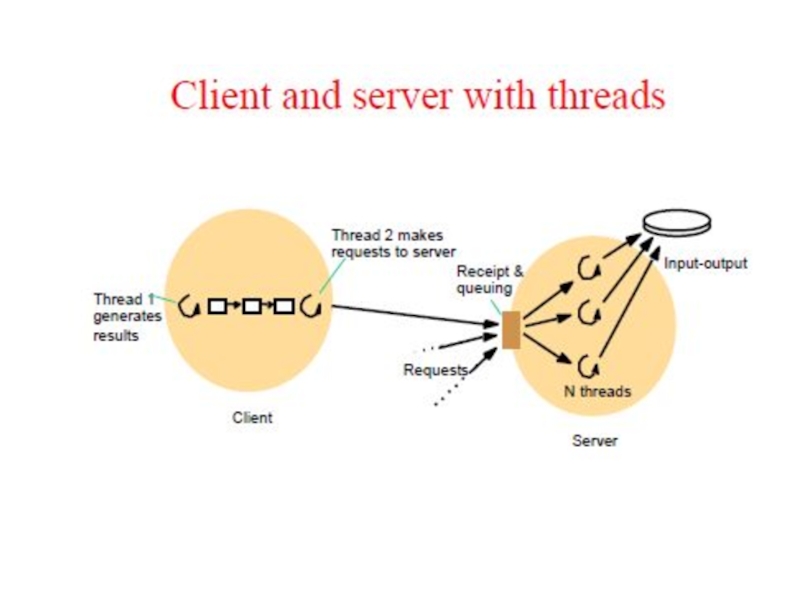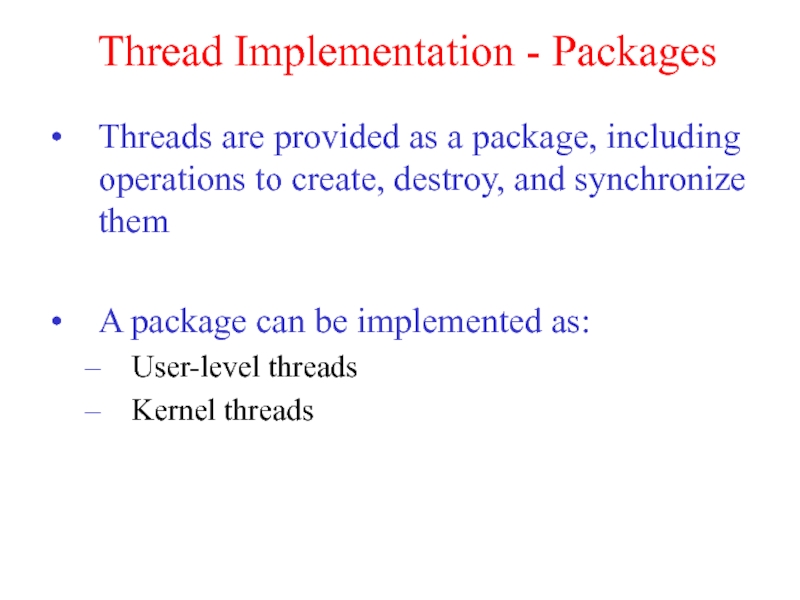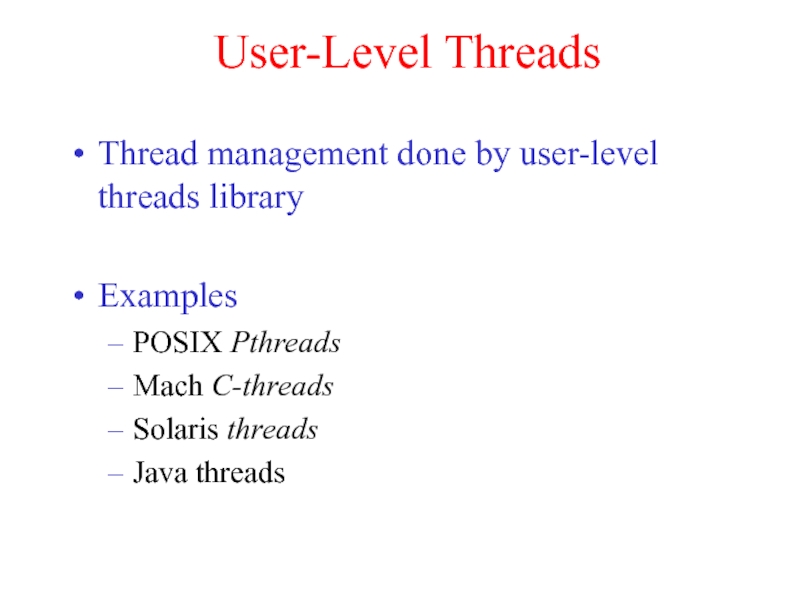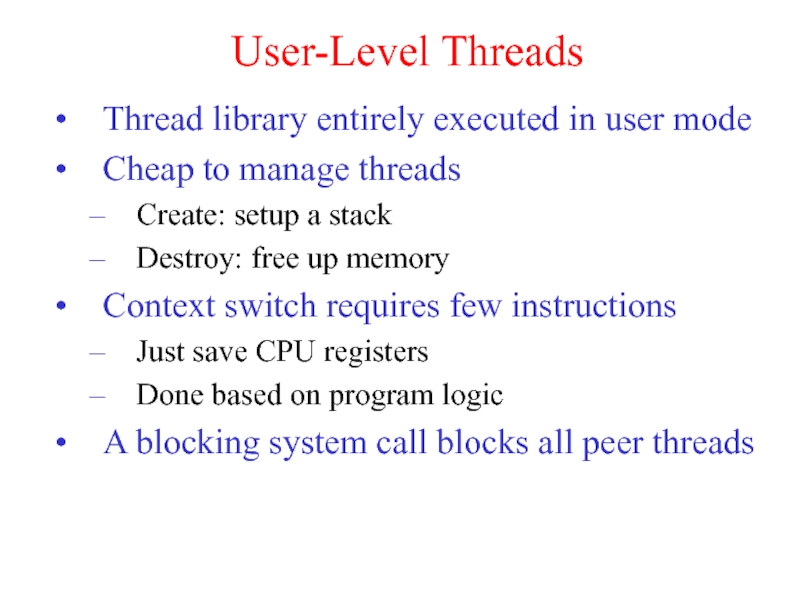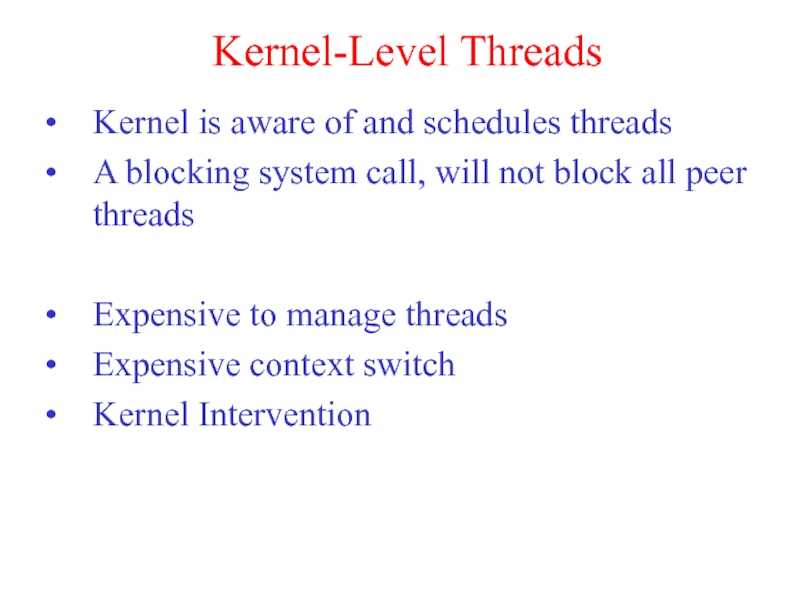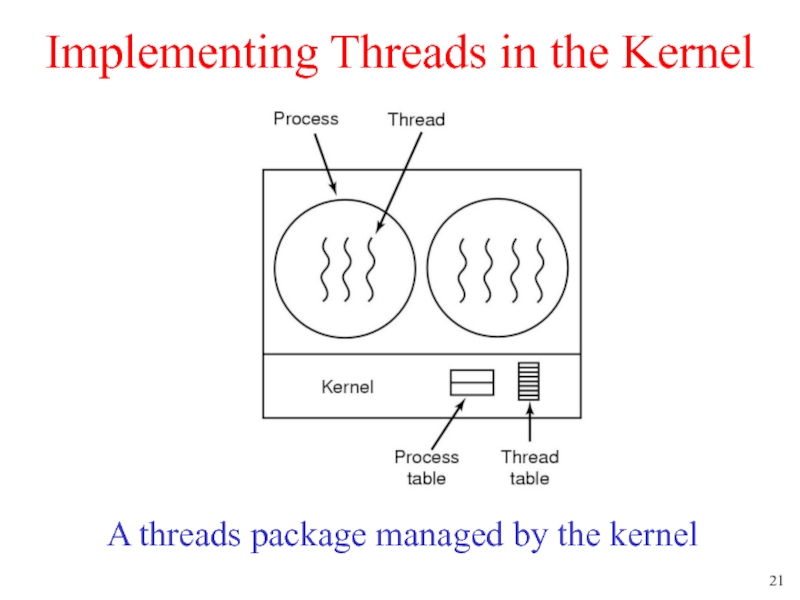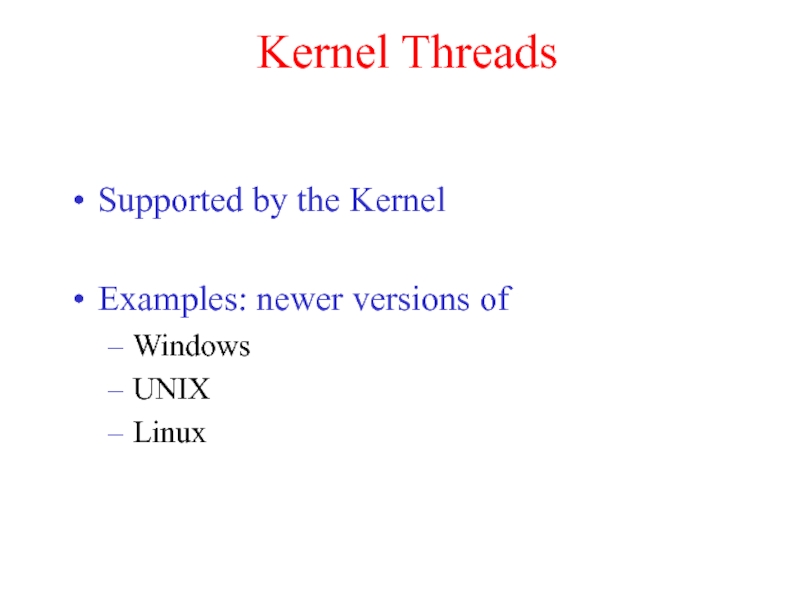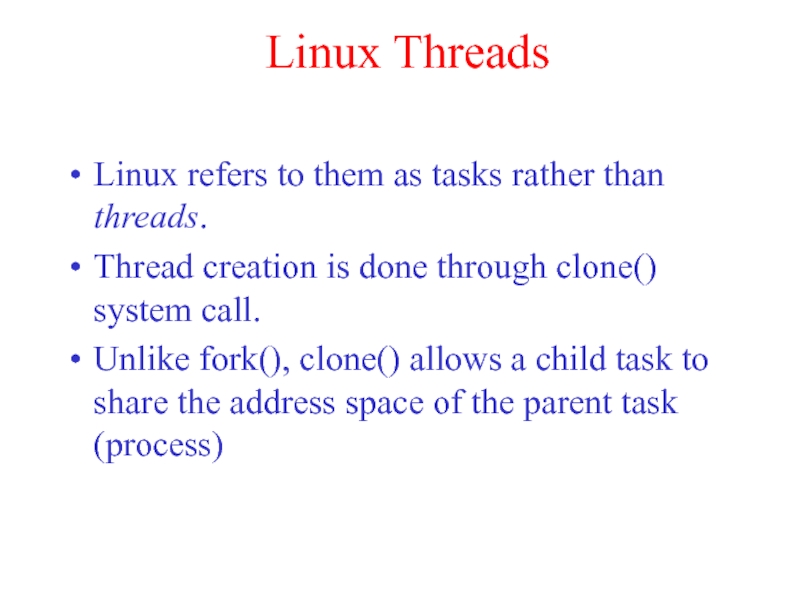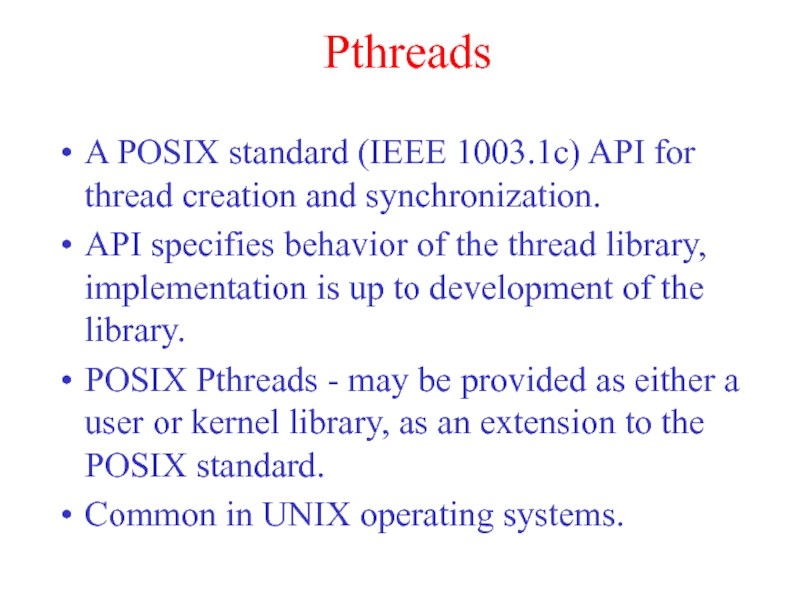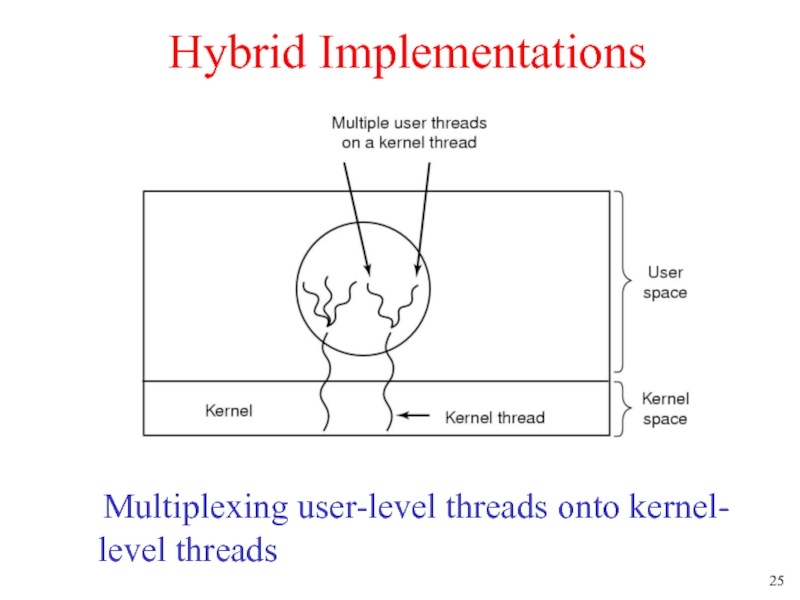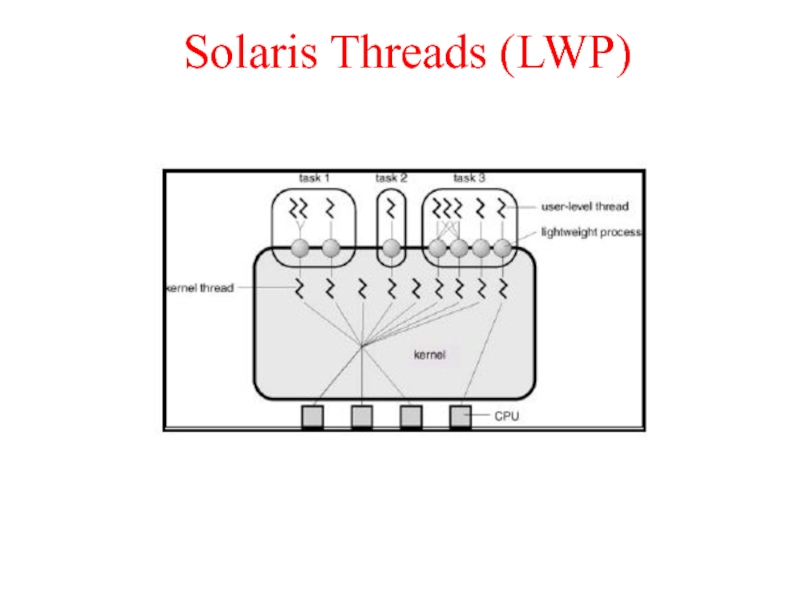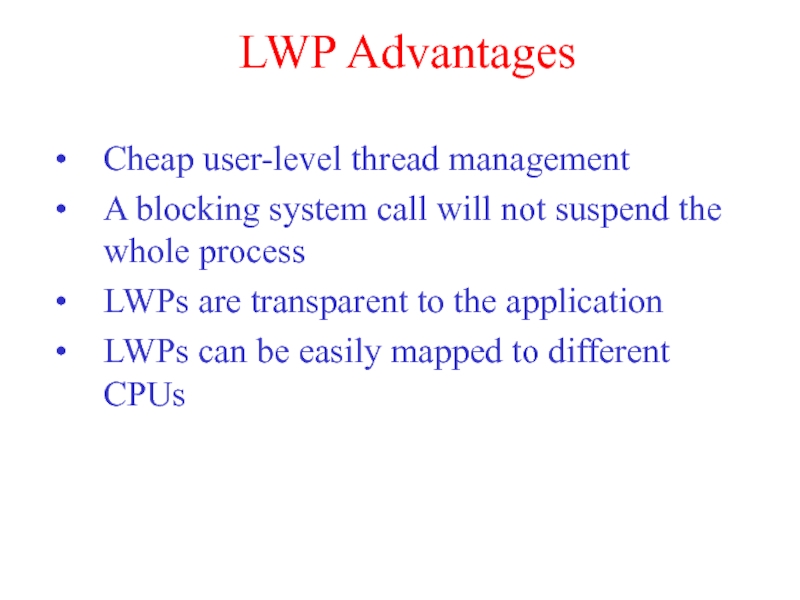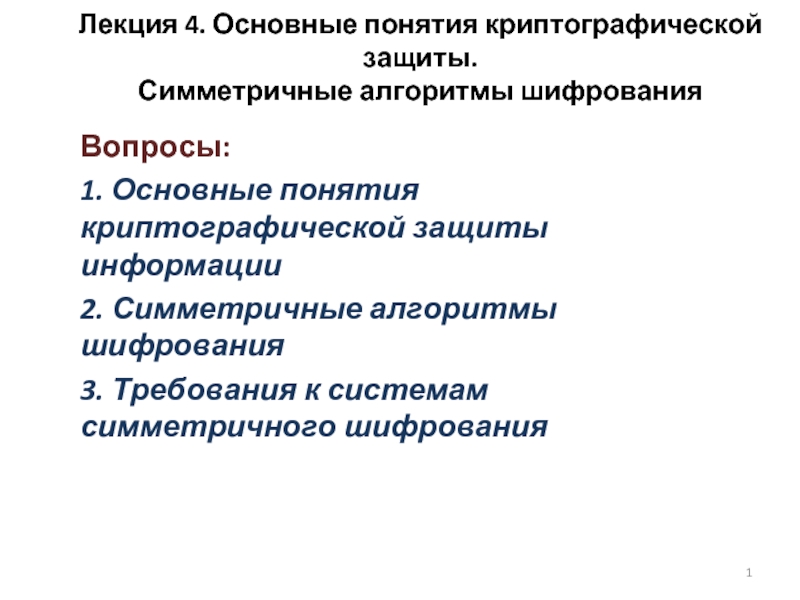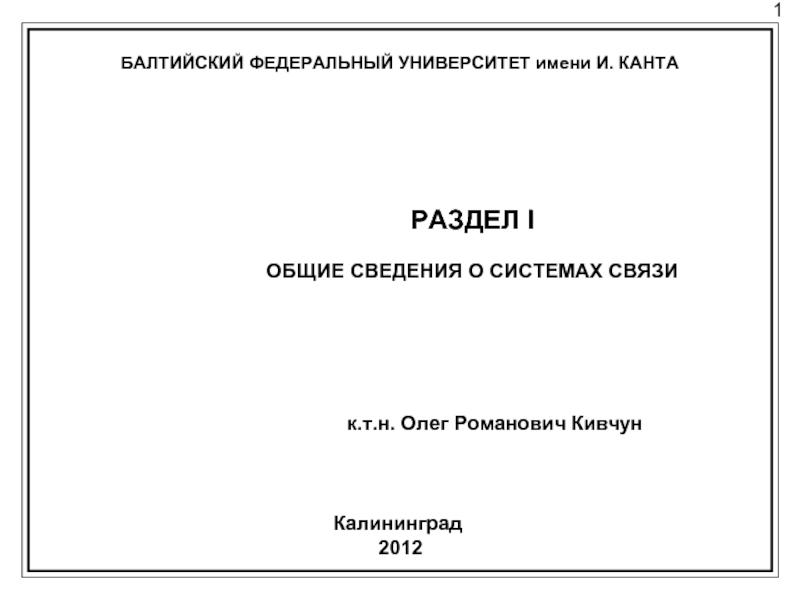Chapter 3
- Главная
- Разное
- Дизайн
- Бизнес и предпринимательство
- Аналитика
- Образование
- Развлечения
- Красота и здоровье
- Финансы
- Государство
- Путешествия
- Спорт
- Недвижимость
- Армия
- Графика
- Культурология
- Еда и кулинария
- Лингвистика
- Английский язык
- Астрономия
- Алгебра
- Биология
- География
- Детские презентации
- Информатика
- История
- Литература
- Маркетинг
- Математика
- Медицина
- Менеджмент
- Музыка
- МХК
- Немецкий язык
- ОБЖ
- Обществознание
- Окружающий мир
- Педагогика
- Русский язык
- Технология
- Физика
- Философия
- Химия
- Шаблоны, картинки для презентаций
- Экология
- Экономика
- Юриспруденция
Processes. Processes & Threads. (Chapter 3) презентация
Содержание
- 1. Processes. Processes & Threads. (Chapter 3)
- 2. Process A program in execution An instance
- 3. Address Space PCB Process in Memory
- 4. Multiprogramming The interleaved execution of two or
- 5. Processes The Process Model Multiprogramming of four
- 6. Multiprogramming
- 7. Cooperating Processes (I) Sequential programs consist of
- 8. Cooperating Processes (II) Cooperating processes need to
- 9. Threads: Motivation Process created and managed by
- 10. Threads The Thread Model (1) (a) Three
- 11. The Thread Model (2) Items shared by
- 12. The Thread Model (3) Each thread has its own stack
- 13. Thread Usage (1) A word processor with three threads
- 14. Thread Usage (2) A multithreaded Web server
- 16. Thread Implementation - Packages Threads are
- 17. Implementing Threads in User Space A user-level threads package
- 18. User-Level Threads Thread management done by user-level
- 19. User-Level Threads Thread library entirely executed in
- 20. Kernel-Level Threads Kernel is aware of and
- 21. Implementing Threads in the Kernel A threads package managed by the kernel
- 22. Kernel Threads Supported by the Kernel Examples: newer versions of Windows UNIX Linux
- 23. Linux Threads Linux refers to them as
- 24. Pthreads A POSIX standard (IEEE 1003.1c) API
- 25. Hybrid Implementations Multiplexing user-level threads onto kernel- level threads
- 26. Solaris Threads (LWP)
- 27. LWP Advantages Cheap user-level thread management
Слайд 1Processes
Part I
Processes & Threads*
*Referred to slides by Dr. Sanjeev Setia at
George Mason University
Слайд 2Process
A program in execution
An instance of a program running on a
computer
The entity that can be assigned to and executed on a processor
A unit of activity characterized by
the execution of a sequence of instructions
a current state
an associated set of system resources
The entity that can be assigned to and executed on a processor
A unit of activity characterized by
the execution of a sequence of instructions
a current state
an associated set of system resources
Слайд 4Multiprogramming
The interleaved execution of two or more computer programs by a
single processor
An important technique that
enables a time-sharing system
allows the OS to overlap I/O and computation, creating an efficient system
An important technique that
enables a time-sharing system
allows the OS to overlap I/O and computation, creating an efficient system
Слайд 5Processes
The Process Model
Multiprogramming of four programs
Conceptual model of 4 independent, sequential
processes
Only one program active at any instant
Only one program active at any instant
Слайд 7Cooperating Processes (I)
Sequential programs consist of a single process
Concurrent applications consist
of multiple cooperating processes that execute concurrently
Advantages
Can exploit multiple CPUs (hardware concurrency) for speeding up application
Application can benefit from software concurrency, e.g., web servers, window systems
Advantages
Can exploit multiple CPUs (hardware concurrency) for speeding up application
Application can benefit from software concurrency, e.g., web servers, window systems
Слайд 8Cooperating Processes (II)
Cooperating processes need to share information
Since each process
has its own address space, OS mechanisms are needed to let process exchange information
Two paradigms for cooperating processes
Shared Memory
OS enables two independent processes to have a shared memory segment in their address spaces
Message-passing
OS provides mechanisms for processes to send and receive messages
Two paradigms for cooperating processes
Shared Memory
OS enables two independent processes to have a shared memory segment in their address spaces
Message-passing
OS provides mechanisms for processes to send and receive messages
Слайд 9Threads: Motivation
Process created and managed by the OS kernel
Process creation expensive,
e.g., fork system call
Context switching expensive
IPC requires kernel intervention expensive
Cooperating processes – no need for memory protection, i.e., separate address spaces
Context switching expensive
IPC requires kernel intervention expensive
Cooperating processes – no need for memory protection, i.e., separate address spaces
Слайд 10Threads
The Thread Model (1)
(a) Three processes each with one thread
(b) One
process with three threads
Слайд 16Thread Implementation - Packages
Threads are provided as a package, including
operations to create, destroy, and synchronize them
A package can be implemented as:
User-level threads
Kernel threads
A package can be implemented as:
User-level threads
Kernel threads
Слайд 18User-Level Threads
Thread management done by user-level threads library
Examples
POSIX Pthreads
Mach C-threads
Solaris threads
Java
threads
Слайд 19User-Level Threads
Thread library entirely executed in user mode
Cheap to manage threads
Create:
setup a stack
Destroy: free up memory
Context switch requires few instructions
Just save CPU registers
Done based on program logic
A blocking system call blocks all peer threads
Destroy: free up memory
Context switch requires few instructions
Just save CPU registers
Done based on program logic
A blocking system call blocks all peer threads
Слайд 20Kernel-Level Threads
Kernel is aware of and schedules threads
A blocking system call,
will not block all peer threads
Expensive to manage threads
Expensive context switch
Kernel Intervention
Expensive to manage threads
Expensive context switch
Kernel Intervention
Слайд 23Linux Threads
Linux refers to them as tasks rather than threads.
Thread creation
is done through clone() system call.
Unlike fork(), clone() allows a child task to share the address space of the parent task (process)
Unlike fork(), clone() allows a child task to share the address space of the parent task (process)
Слайд 24Pthreads
A POSIX standard (IEEE 1003.1c) API for thread creation and synchronization.
API
specifies behavior of the thread library, implementation is up to development of the library.
POSIX Pthreads - may be provided as either a user or kernel library, as an extension to the POSIX standard.
Common in UNIX operating systems.
POSIX Pthreads - may be provided as either a user or kernel library, as an extension to the POSIX standard.
Common in UNIX operating systems.
Слайд 27LWP Advantages
Cheap user-level thread management
A blocking system call will not suspend
the whole process
LWPs are transparent to the application
LWPs can be easily mapped to different CPUs
LWPs are transparent to the application
LWPs can be easily mapped to different CPUs
